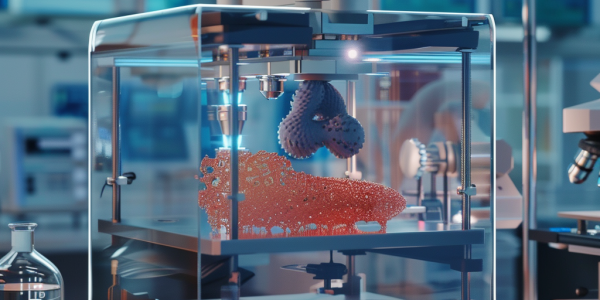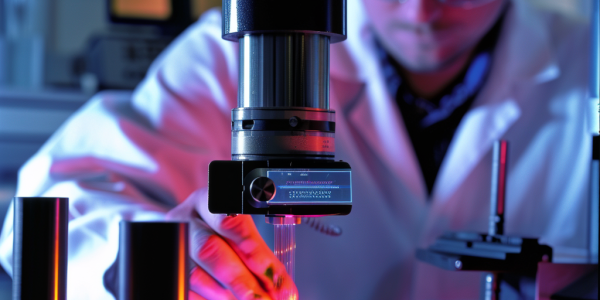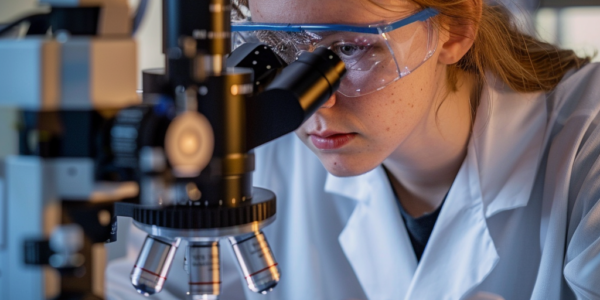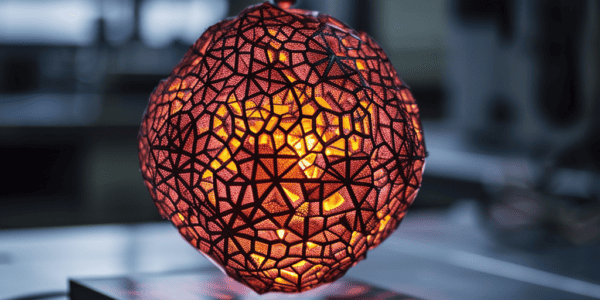MIT Researchers Unveil Breakthrough in Metabolic Imaging Techniques
A groundbreaking study from MIT introduces a novel metabolic imaging technique that significantly enhances penetration depth, allowing for clearer and more detailed visualization of living tissues. This innovative approach accelerates imaging processes and eliminates the need for tissue preprocessing, paving the way for advancements in cancer research, drug discovery, and more.
Penn State Researchers Unveil Revolutionary HITS-Bio Bioprinting System
Penn State University researchers have launched the High-throughput Integrated Tissue Fabrication System for Bioprinting (HITS-Bio), a groundbreaking technology that produces functional biological tissues ten times faster than traditional methods. Utilizing cell clusters known as spheroids, HITS-Bio ensures high cell viability while enabling rapid assembly of complex tissue structures. This innovative system promises to revolutionize regenerative medicine, with potential applications in organ transplantation and advanced therapeutic interventions.
MIT Researchers Unveil Groundbreaking 20-Fold Tissue Expansion Technique for High-Resolution Imaging
MIT researchers have developed a groundbreaking 20-fold tissue expansion technique that allows high-resolution imaging of nanoscale structures using standard light microscopes. This innovative method democratizes access to advanced biological imaging, reducing costs and enabling more laboratories to conduct detailed studies of cellular components, such as synapses and proteins. Published in Nature Methods, this technique promises to transform biological research and open new avenues for scientific discovery.
Revolutionary NIR Thermometer Enhances Temperature Measurement Accuracy
Recent advancements in thermal imaging technology from the University of Houston promise to revolutionize temperature measurement in military and medical applications. A new non-contact thermometer utilizing near-infrared spectroscopy offers precise readings without reliance on emissivity values, addressing limitations of traditional methods. This innovation enhances diagnostic capabilities and operational efficiency, paving the way for breakthroughs in various fields.
MIT Engineers Develop Groundbreaking Computer Vision Method for Characterizing Electronic Materials
MIT engineers have developed a groundbreaking computer vision method for rapid characterization of electronic material properties, significantly outpacing traditional approaches. This innovative technique aims to expedite the discovery of superior electronic materials for applications such as solar cells, transistors, LEDs, and batteries. The method accelerates the characterization process by an impressive 85 times, revolutionizing the evaluation of freshly synthesized electronic materials.
Novel Deposition Method Measures Intrinsic Hydride-Ion Conductivity of Perovskite Hydrides
Researchers from Shibaura Institute of Technology have developed a novel deposition method to measure the intrinsic hydride-ion conductivity of perovskite hydrides, advancing hydrogen-related materials research. This innovative technique involves a unique laser deposition process in an H-radical atmosphere, enabling the growth of high-quality single crystals of ternary perovskite hydrides with promising applications in sustainable energy technologies.
New Technique Curves Light for Improved Wireless Communication
Discover how researchers are using a new technique to curve light and overcome obstacles in wireless communication. Learn about the potential for terahertz waves to revolutionize data transmission and increase bandwidth.
NUS Researchers Make Groundbreaking Discovery in Creating Carbon-Based Quantum Materials
Researchers at the National University of Singapore (NUS) have developed an innovative method for creating carbon-based quantum materials atom by atom using a combination of scanning probe microscopy and advanced deep neural networks. This groundbreaking approach demonstrates the potential for artificial intelligence (AI) to revolutionize atomic manufacturing and quantum material research, with significant promise for both basic science and potential future applications. The development of open-shell magnetic nanographenes is particularly significant, crucial for the development of high-speed electronic devices at the molecular level and the creation of quantum bits, the building blocks of quantum computers.
Breakthrough in Tissue Engineering: Artificial Cartilage Developed Using 3D Printing Technique
TU Wien (Vienna) has achieved a breakthrough in tissue engineering with the development of artificial cartilage using a unique 3D printing technique. This innovative approach, detailed in a study published in Acta Biomaterialia, could revolutionize the field of regenerative medicine by providing a method to precisely control tissue formation and potentially improve the development of artificial cartilage and other types of replacement tissue.
New Theoretical Contribution for High-Entropy Ceramics
Your privacy, your choice High-entropy ceramics, a promising class of materials with diverse applications, are gaining attention for their potential in extreme environments. A recent study published in Nature introduces a new theoretical contribution, the disordered enthalpy–entropy descriptor (DEED), which…










